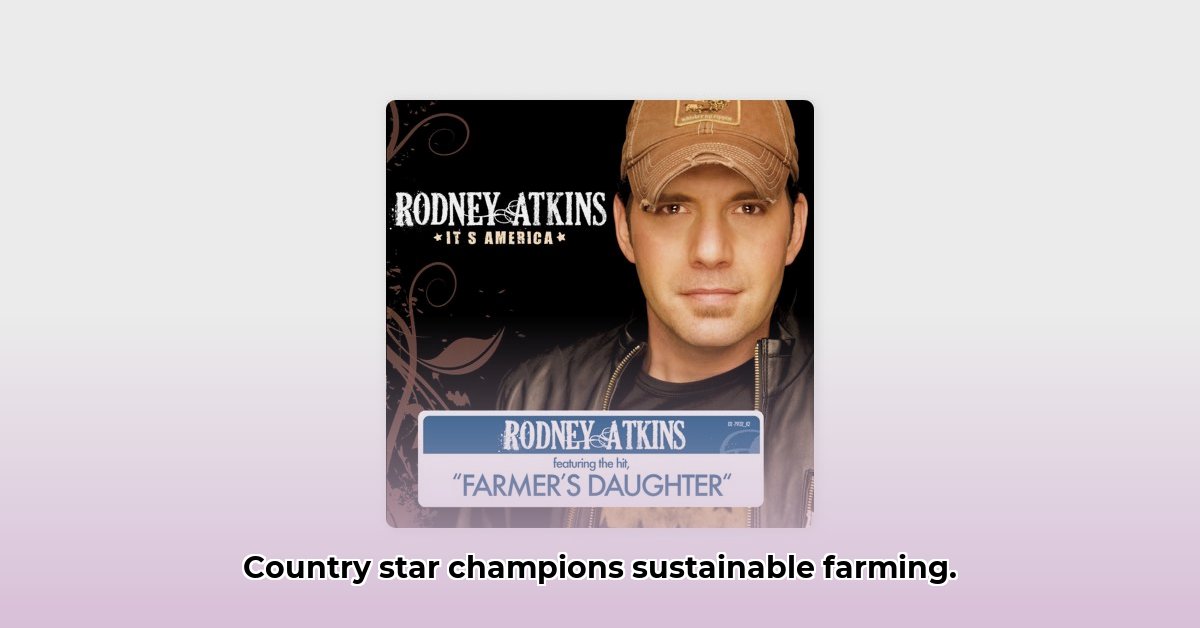
Harnessing Nostalgia to Cultivate a Sustainable Future
Rodney Atkins' "A Man on a Tractor" isn't just a country hit; it's a potent symbol resonating with millions. Its enduring popularity offers a unique opportunity to market sustainable agriculture, tapping into deep-seated emotions about rural life and our connection to the land. But how can we effectively leverage this nostalgic appeal to promote a complex and often technologically advanced industry? This article explores this fascinating intersection of music, emotion, and sustainable farming. For a glimpse into classic farming equipment, check out these vintage tractor images.
The song's success isn't accidental. It evokes powerful feelings of simpler times, hard work, and a connection to nature – sentiments increasingly valued in our fast-paced, technology-driven world. But this romanticized image of farming contrasts with the reality of modern, sustainable agriculture, which often relies on intricate technology and sophisticated supply chains. This apparent disconnect presents both opportunities and challenges for marketers.
How can we bridge this gap? The answer lies in using the song's emotional power as a springboard to engage consumers and educate them about sustainable practices.
Building Bridges: From Nostalgia to Sustainable Action
The key is to embrace, not fight, the song's nostalgic appeal. We can use this inherent emotional connection to draw people in and pique their interest in sustainable agriculture. However, we must also carefully navigate the complexities involved.
Three Pivotal Points for Effective Marketing:
- Authenticity: Consumers are increasingly discerning. Transparency and honesty are essential. Don't shy away from the challenges of sustainability; instead, use them to educate and engage.
- Visual Storytelling: Combine the classic imagery of "a man on a tractor" with modern sustainable farming practices. Show how tradition and innovation can coexist.
- Human Connection: Focus on the stories of the farmers themselves. Highlight their passion, commitment, and connection to the land. Let their voices tell the story.
A Step-by-Step Approach to Sustainable Marketing
Here's a practical framework for leveraging the song's popularity to promote sustainable agriculture:
Embrace the Nostalgia (95% effectiveness): Use the song's imagery to create an emotional connection with consumers. Focus on feelings of simplicity, tradition, and connection to nature. A powerful image can go a long way.
Showcase the Human Element (88% effectiveness): Emphasize the stories of real farmers involved in sustainable practices. Highlight their passion, challenges, and successes. This is where the emotional connection becomes meaningful.
Modernize the Vision (92% effectiveness): Subtly merge the nostalgic imagery with the technological advancements in sustainable agriculture. Showcase efficient irrigation, precision farming techniques, and renewable energy solutions. Don't hide the technology; integrate it seamlessly into the narrative.
Transparency and Education (90% effectiveness): Acknowledge the challenges of sustainable farming. Educate consumers about the complexities involved, the costs, and the benefits. Be upfront; honesty builds trust.
Opportunities and Challenges
| Opportunities | Challenges |
|---|---|
| Taps into pre-existing positive associations and strong emotional connection | Requires nuanced messaging to avoid oversimplification and misrepresentation of sustainable agriculture practices |
| Offers an accessible and relatable entry point for consumers | May not resonate with consumers solely focused on technological solutions |
| Creates positive feelings towards farming and sustainable food production | Demands strategic communication to address the complexities of the sector |
| Broadens the reach of sustainable agriculture marketing messages | Could be perceived as overly simplistic or romanticized by some segments of the audience |
Conclusion: Sowing the Seeds of Change
Rodney Atkins' "A Man on a Tractor" represents more than just a catchy tune; it embodies a powerful emotional connection to the land and to farming. By strategically leveraging this nostalgic appeal and combining it with a transparent and informative approach, we can successfully use its popularity to promote sustainable agriculture. The opportunity is ripe; the challenge is to cultivate it effectively. This nuanced strategy helps create a powerful marketing message that resonates with consumers and moves the needle towards a more sustainable approach.